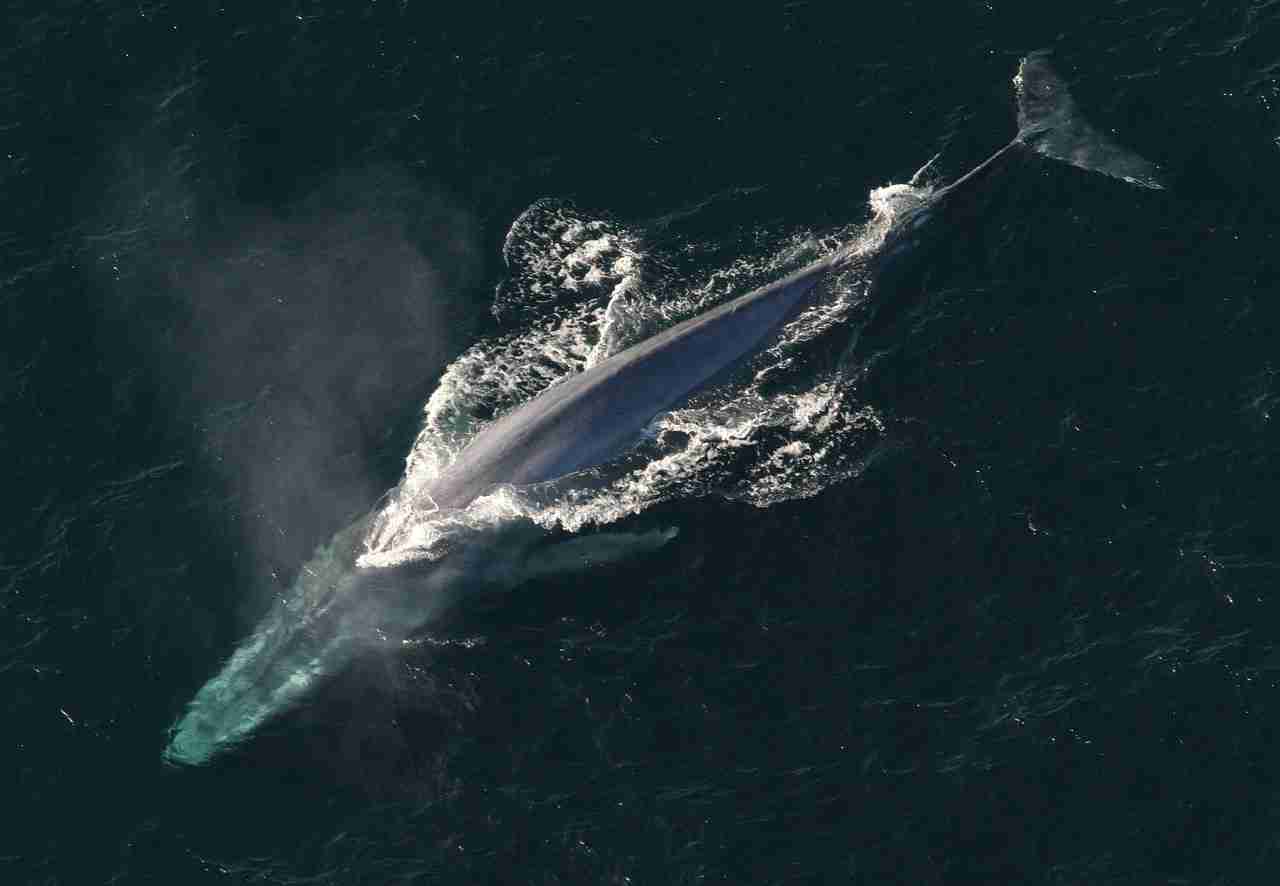23 Fun Facts About Whales: Nature’s Majestic Marine Mammals
1. Whales are mammals.
Belonging to the cetacean family, which also includes dolphins and porpoises, whales are warm-blooded, breathe air, and nurse their young with milk, just like us.
This distinction highlights their evolutionary link to land-dwelling ancestors who returned to the seas millions of years ago, adapting to their marine environment while retaining their mammalian characteristics.
2. The blue whale is the largest animal on Earth.
Stretching up to an astonishing 100 feet (30 meters) in length and weighing an incredible 200 tons, its sheer size leaves us in awe.
To put it into perspective, the tongue alone of a blue whale can weigh as much as an elephant, and its heart is comparable in size to a small car.
Blue whales are found in all of the world’s oceans, except for the Arctic and Antarctic.
3. The heart of a blue whale weighs around 1,300 pounds.
To put its size into perspective, the heart of a blue whale is roughly as heavy as a small car.
This incredible cardiac powerhouse enables the blue whale to pump blood through its colossal body, sustaining its enormous size and allowing it to navigate the vast ocean with grace and power.
The heart of a blue whale is also the largest muscle in the animal kingdom.
4. Whales breathe air at the water’s surface.
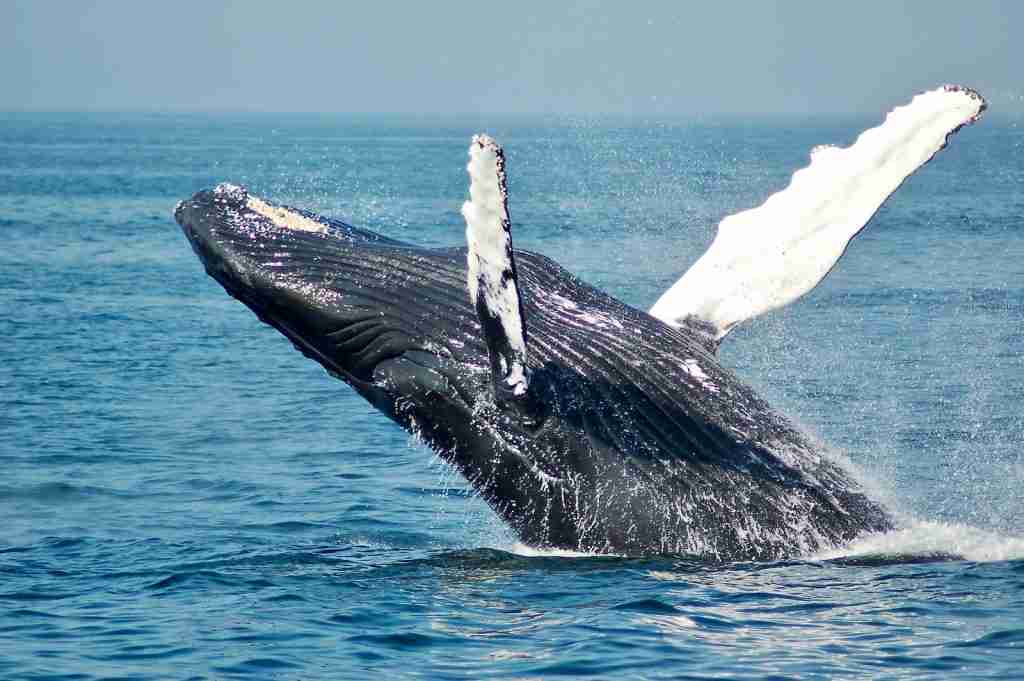
Whales, being mammals, have a unique way of breathing. Despite living in water, they are air-breathing creatures and must come to the water’s surface periodically to breathe.
Whales breathe through the blowhole located on the top of their head.
This adaptation allows them to take in fresh oxygen and expel carbon dioxide. Remarkably, some whale species, such as the sperm whale, have an impressive breath-holding ability and can stay submerged for up to 90 minutes before resurfacing.
5. Humpback whales are known for their elaborate songs.
Humpback whales are awe-inspiring in size and renowned for their musical talents. During the breeding season, male humpback whales produce elaborate and hauntingly beautiful songs that can be heard from miles away.
These mesmerizing melodies can last up to 20 minutes, and the whales often repeat them for hours on end.
Humpback whales also produce other sounds, such as clicks and squeaks, which are used for echolocation.
6. Orcas are commonly known as killer whales.
Orcas are fascinating creatures that belong to the dolphin family, making them the largest species in this group. Despite their intimidating name, killer whales are not whales at all but rather highly intelligent and social dolphins.
They are renowned for their striking black-and-white coloration and their complex social structures.
Orcas are skilled predators and are known to hunt various marine species, including fish, seals, and even other whales.
7. Whales have a diverse diet.
The mighty blue whale, the largest animal on Earth, sustains itself primarily on a tiny, shrimp-like krill diet, filtering massive quantities through its baleen plates.
In stark contrast, the enigmatic sperm whale, known for its deep-sea voyages, sets its sights on the elusive giant squid, showcasing its remarkable ability to dive to great depths in pursuit of its prey.
This captivating contrast in feeding habits underscores the intricacies of the marine food chain and the incredible adaptations of these majestic creatures to their unique ecological niches.
8. The narwhal is also known as the unicorn of the sea.
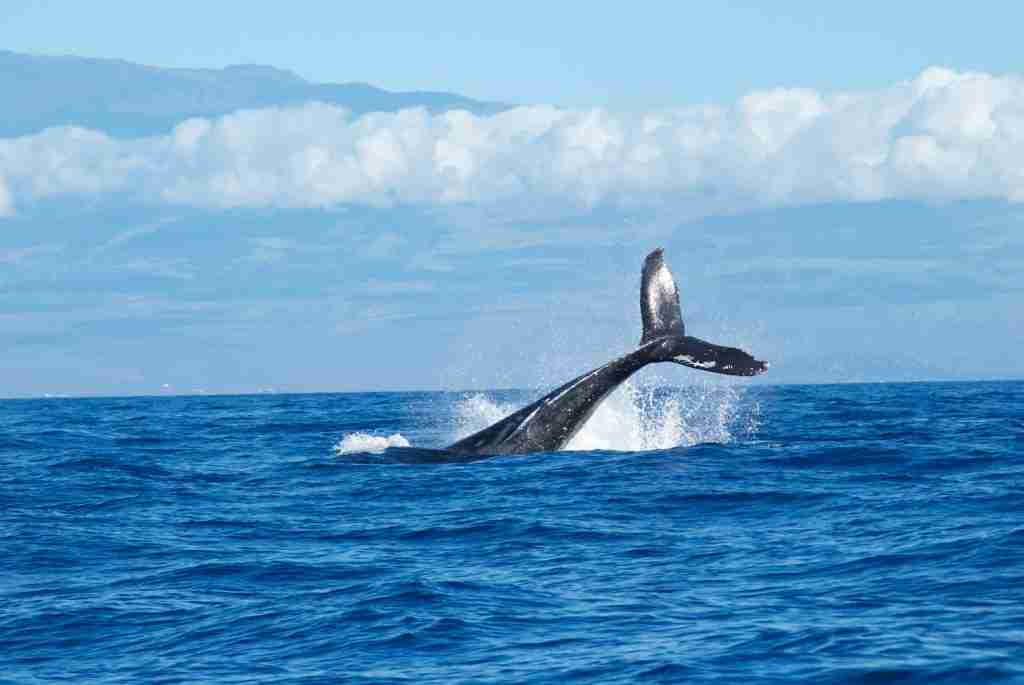
The narwhal’s remarkable feature sets it apart from other whale species. Its long, spiral tusk, reminiscent of a mythical horn, is, in fact, an elongated tooth. This extraordinary tusk can grow to an impressive length of up to 10 feet (3 meters).
While scientists are still studying the exact purpose of the narwhal’s tusk, it is believed to play a role in communication, sensory perception, and perhaps even in breaking through the ice during its Arctic habitat.
Narwhals are found in the Arctic Ocean and eat fish, squid, and other small marine animals.
9. Whales communicate through a variety of vocalizations and body language.
Whales often considered the gentle giants of the ocean, boast their massive size, intelligence, and intricate social dynamics. These magnificent creatures have been extensively studied and demonstrated high intelligence levels.
They communicate with one another using an impressive array of vocalizations, such as clicks, whistles, and songs that can be heard over vast distances.
Their body language, which includes breaching, tail slapping, and spy-hopping, further enhances their social interactions and plays a crucial role in their communication and bonding within their pods.
10. The gray whale can travel over 12,000 miles.
The gray whale embarks on an epic migration, undertaking one of the longest journeys of any mammal on Earth.
This remarkable migration showcases the gray whale’s adaptability and determination as it navigates vast stretches of ocean, crossing international borders along its journey.
Gray whales are filter feeders and eat krill, small shrimp-like creatures. They use their baleen plates to filter the krill out of the water.
11. Whales rest one hemisphere of their brain during sleep.
Whales are mammals, and like all mammals, they need to sleep. However, they cannot sleep like humans do, with both halves of their brains at rest. This is because whales need to breathe air and cannot do this while asleep.
Instead, whales rest one hemisphere of their brain at a time. This allows them to stay alert for predators and to surface to breathe. Whales can also change the amount of time they spend resting in each hemisphere, depending on how tired they are.
This ability to rest one hemisphere of the brain is called unihemispheric sleep. It is thought to be an adaptation that allows whales to sleep while still being able to breathe and stay alert.
12. Sperm whales have the largest brain of any animal on Earth.
Sperm whale brain weighs up to 18 pounds (8 kilograms). This remarkable brain size is a testament to their intelligence and complex cognitive abilities.
As they dive to astounding depths in search of prey, their brain power undoubtedly plays a crucial role in navigating the depths and communicating with fellow pod members.
They use their echolocation to find food in the ocean’s dark depths.
13. Baleen whales have specialized bristle-like structures called baleen.
Baleen whales, including humpback and gray whales, employ a clever feeding strategy to sustain their massive size.
As they glide through the water with their mouths open, baleen whales use these plates to filter out tiny organisms like krill and plankton, trapping them inside their mouth while releasing the water.
This ingenious adaptation enables them to feast on vast quantities of food with each mouthful, ensuring their nourishment and sustaining their impressive size throughout their oceanic journey.
Baleen whales are found in all oceans except the Arctic Ocean. They are divided into two groups: mysticetes and odontocetes. Mysticetes have baleen, while odontocetes have teeth.
14. Whales are believed to have evolved from land-dwelling ancestors.
The remarkable journey of whales traces back to their ancient roots. Over 50 million years ago, these magnificent creatures evolved from land-dwelling ancestors and eventually transitioned back to the sea.
The gradual adaptation to aquatic life over countless generations equipped them with various specialized features for survival in their marine environment.
Over time, whales evolved to live in the water. They lost their legs and developed flippers.
15. Beluga whales, are known for their distinctive vocalizations, often called “whale songs.”
Known for their distinctive and melodic sounds, beluga whales are often referred to as “canaries of the sea” due to their wide range of vocalizations.
Their “whale songs” consist of clicks, whistles, and chirps that serve various communication purposes within their social groups.
These complex and diverse vocalizations play a vital role in their tight-knit communities and help them navigate through their Arctic habitat.
16. Whales are found in oceans and seas worldwide.
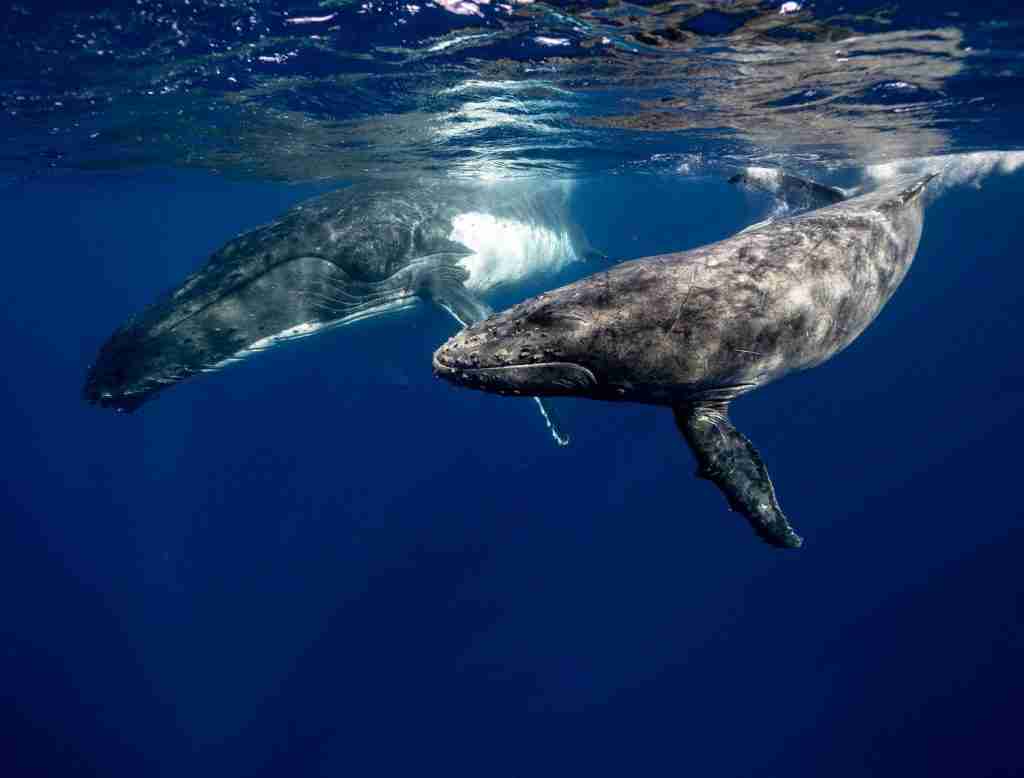
Whales, the majestic marine wanderers, traverse the vast expanses of our planet’s waters, adapting to a wide range of habitats.
These magnificent creatures roam the world’s oceans and seas from the freezing Arctic to the chilling Antarctic. Their extraordinary journeys take them through shallow coastal waters and into the deep expanse of the open ocean.
Whales are divided into two groups: baleen whales and toothed whales. Baleen whales have baleen, which is a comb-like structure used to filter food from the water. Toothed whales have teeth, which they use to catch and eat prey.
17. The lifespan of whales varies by species.
Some of these incredible marine giants can astonish us with their longevity, living well over 200 years. On the other end of the spectrum, certain whale species have a relatively shorter lifespan, averaging around 40 to 70 years.
This diversity in lifespans highlights each species’ unique biology and ecological adaptations.
From the majestic bowhead whale, which can live for centuries, to the charismatic orca, which may live around 50-80 years, the remarkable range of whale lifespans adds to the intrigue and complexity of their lives in the deep blue sea.
18. Humpback whales are famous for their acrobatic displays.
Renowned for their graceful breaching, they launch themselves out of the water, arching gracefully before crashing back into the sea with a mighty splash. Another crowd-pleaser is their tail slapping, or “lobtailing,” as they raise their massive tails above the water and forcefully slap them against the surface.
These awe-inspiring behaviors are believed to serve various purposes, such as communication, play, and mating displays.
Humpback whales are also known for their songs, which can last for hours.
19. Whales have a layer of blubber (fat) under their skin.
This thick layer serves as a remarkable insulator, keeping them warm in the chilly waters and protecting them from extreme temperatures.
The blubber acts as a valuable energy reserve, especially during long migrations and periods of fasting.
As they traverse vast distances in search of food or breeding grounds, this energy-rich blubber sustains them, ensuring they have the strength and endurance to undertake their incredible journeys through the deep blue expanse.
20. The gray whale has friendly and curious behavior toward humans.
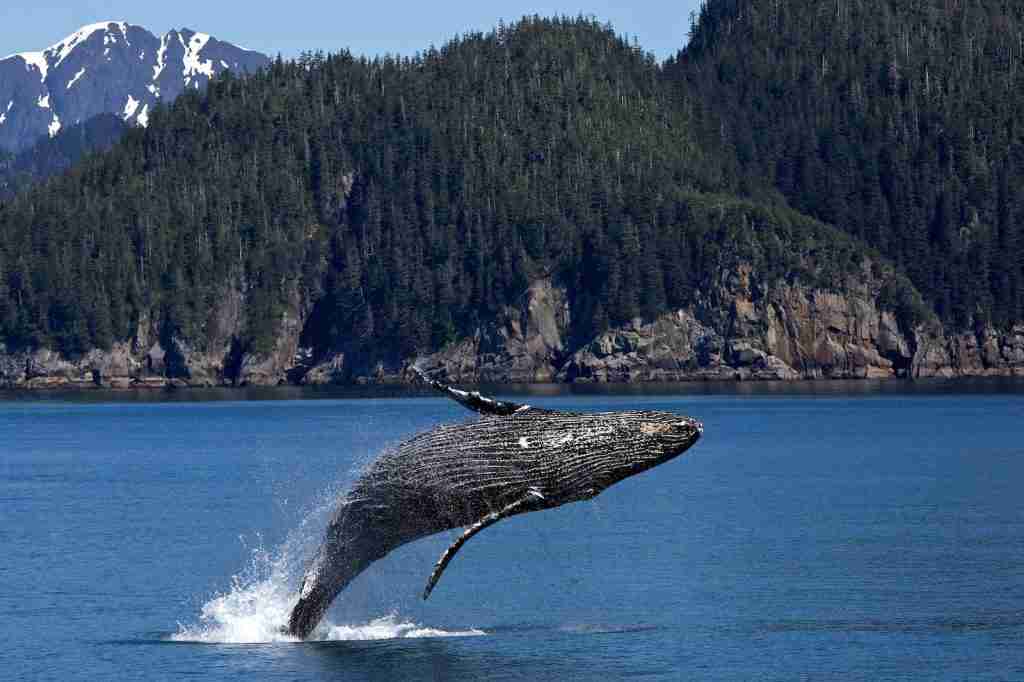
Often approaching boats and displaying inquisitive behaviors, such as spy-hopping and breaching, the gray whale’s interactions with humans leave a lasting impression.
These encounters provide a rare opportunity for people to connect with these magnificent beings, fostering a deeper appreciation for marine life and the need to protect their delicate ocean habitats.
Gray whales are found in the Pacific Ocean, and they migrate between their feeding grounds in the Arctic and their breeding grounds in the Baja California Peninsula.
21. One of the fun facts about Whales is that whales use echolocation to navigate and find food.
By emitting a series of sound waves into their surroundings, they can “see” through sound. When these sound waves encounter an object, such as prey or obstacles, they bounce back as echoes to the whale’s sensitive ears.
This process provides them with valuable information about their environment, helping them locate food sources, detect potential dangers, and navigate through the vast ocean expanses, even in dark or murky waters.
22. The Dwarf sperm whale is the smallest whale species.
Despite its name, this charming creature is not closely related to the larger sperm whale. With a modest maximum length of about 9 feet (2.7 meters), the dwarf sperm whale is a miniature marvel of the ocean.
Its compact size allows it to easily navigate shallow coastal waters, where it primarily feeds on small fish and squid.
Dwarf sperm whales are found in tropical and subtropical waters around the world. They eat fish, squid, and other small marine animals.
23. Some species of whales, like the bowhead whale, have been found with ancient harpoon points.
These artifacts serve as a testament to the harrowing encounters these magnificent creatures have endured with whalers over the centuries.
Astonishingly, some of these harpoons date back to the 19th century, suggesting that these whales can live well over 100 years, making them one of the longest-living mammals on Earth.
The bowhead whale is the most hunted whale species, and it is thought that over 200,000 bowhead whales were killed in the 19th century.
FAQs
The blue whale holds the title of the largest animal ever on our planet, growing up to an astonishing 100 feet in length and weighing as much as 200 tons.
Whales are known for their diverse and complex communication methods, including songs, clicks, and whistles. These vocalizations are vital in their social interactions and navigation through the vast oceans.
A whale’s blowhole, located on top of its head, is its unique breathing apparatus. It allows the whale to surface and breathe air, enabling it to stay submerged for extended periods while staying connected to the world above.
Baleen whales, such as humpback and gray whales, use baleen plates to filter tiny organisms like krill and plankton from the water. These plates act like a sieve, trapping their food while releasing the water.
Many whale species undertake remarkable migrations, often traveling long distances between feeding and breeding grounds. These migrations are driven by factors like seasonal changes in food availability and the need to find safe and warmer waters for calving and mating.

